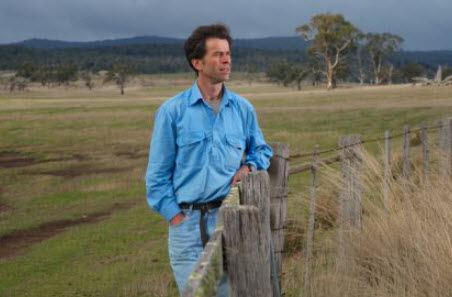Keeping the balls in the air

Julian von Bibra is a good juggler. Running almost 20,000ha across two locations at Ross and Gladstone in Tasmania, which carry 40,000 ewes for wool and prime lamb production as well as a mob of Angus breeders is complex enough. Then add in farming irrigated crops, including poppies and wheat.
Far from running a circus, this fourth-generation producer manages a suite of enterprises that neatly complement each other.
The reason the balls don’t come crashing down, he says, is the skills and commitment of his family and staff.
“They’re definitely the reason why it all works,” Julian said.
“Relationships, both within your business and with your customers and suppliers, are so important.”
The von Bibras have just celebrated a century of farming at ‘Beaufront’, at Ross, but they don’t have time to rest on their laurels. An intensive crop-pasture rotation – driven by the poppy contract – won’t allow it.
Crop-driven rotations
“We’ve got 750ha of irrigation under centre pivots, fed by the Macquarie River, and we usually grow 200ha of poppies a year,” Julian said.
Poppies are followed by grazing wheat to fill the feed gap over winter and the next year the paddocks are sown to grass seed or canola.
“We like the grass phase to extend for two years, the first year being aggressive while the second year is a rest, and then it’s back to cropping.
“We aim to have four to five years between poppy crops on the same paddocks.”
Irrigation is an important risk mitigation tool and the von Bibras are putting in a further two sites to create a total of 1,000ha under nine centre pivots.
“In the Midlands (Ross), dry periods can sneak up on you very quickly and it’s quite easy to become overstocked,” he said.
“The irrigation gives us more control over our feed availability and more time to react.
“The trick is to move quickly, to match your stocking rate to your carrying capacity.”
The von Bibras use dry animals – both sheep and cattle – as ‘pressure relief valves’ when the seasons become unfavourable.
Due to an expansion in breeding capacity, Julian has only retained about 200 wethers over two years of age and they will be the first to go in a tight season.
If the season is good, the steers are grown out to MSA specifications and sold direct to the processor. Shorter-term options include selling to a feedlot or the weaner sales in tough times.
“During these times, price is a secondary consideration for us; it’s about how quickly we can move to conserve feed and ground cover, meet our animal welfare needs and maintain our core breeding numbers," Julian said.
Tight heifer joining
A stickler for efficiency, Julian applies strong selection pressure for fertility to his maiden heifers, joining for only three to four weeks, while the main cow herd is joined for eight.
“I do this primarily because I want a short calving period to minimise the labour required for supervision, and to ensure heifers don’t get too fat as they approach spring, increasing the dystocia risk,” he said.
“The selection for high fertility is an add-on benefit.”
With about 70% of the heifer drop generally pregnancy-testing in calf, Julian aims to have the remaining 30% (‘empties’) hit the MSA grid at JBS Longford.
Don’t miss Tassie’s Red Meat Update
Julian was a presenter at last year's MLA-supported Tasmanian Red Meat Update, where he spoke about the complexity of his business. This year's event will be held on Friday 28 July at The Tramsheds Function Centre in Launceston.
This year's theme is building business resilience. For more program details visit https://redmeatupdates.com/red-meat-updates-2017/
Information: Julian von Bibra
E:beaufront@bigpond.com



